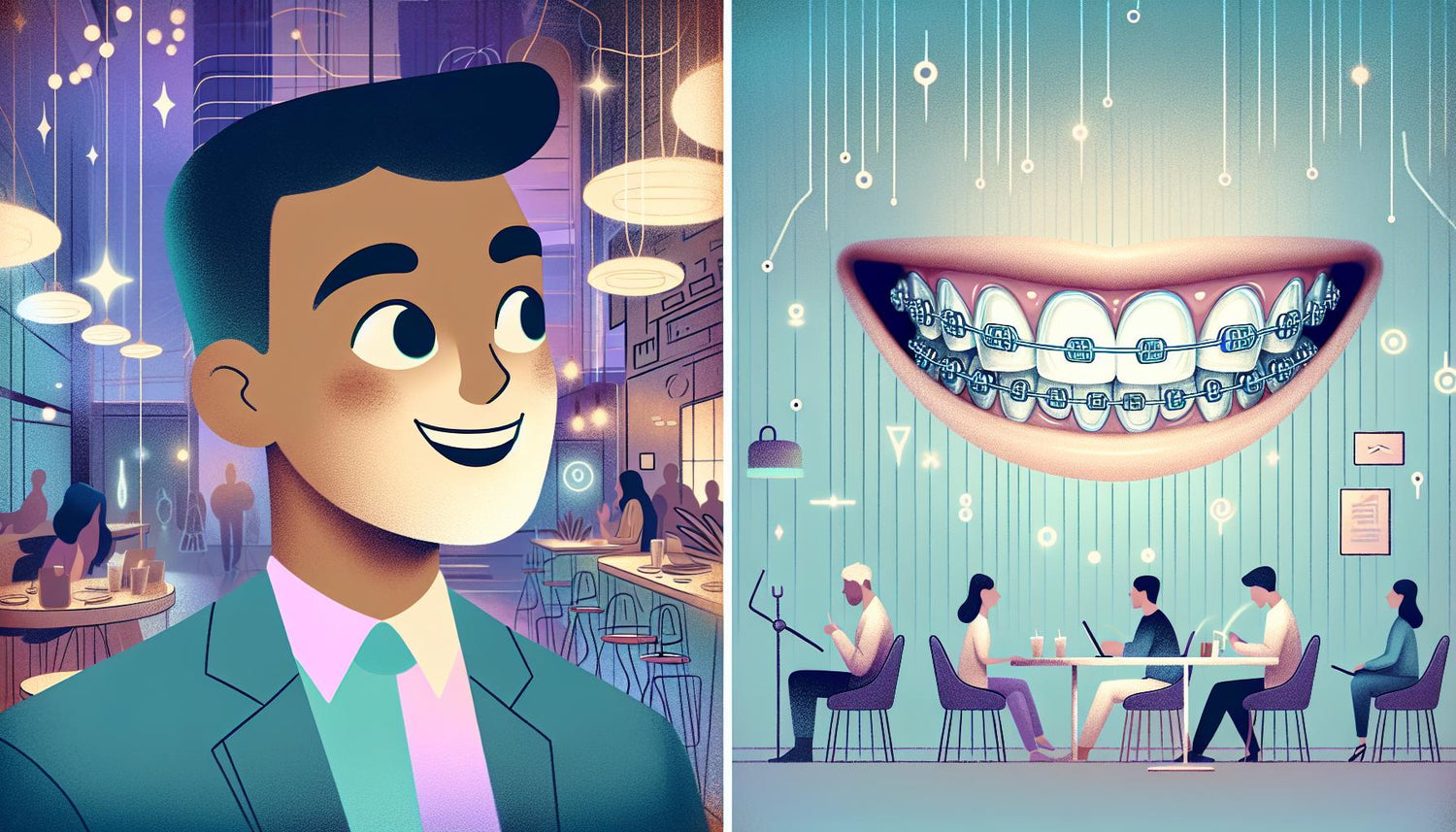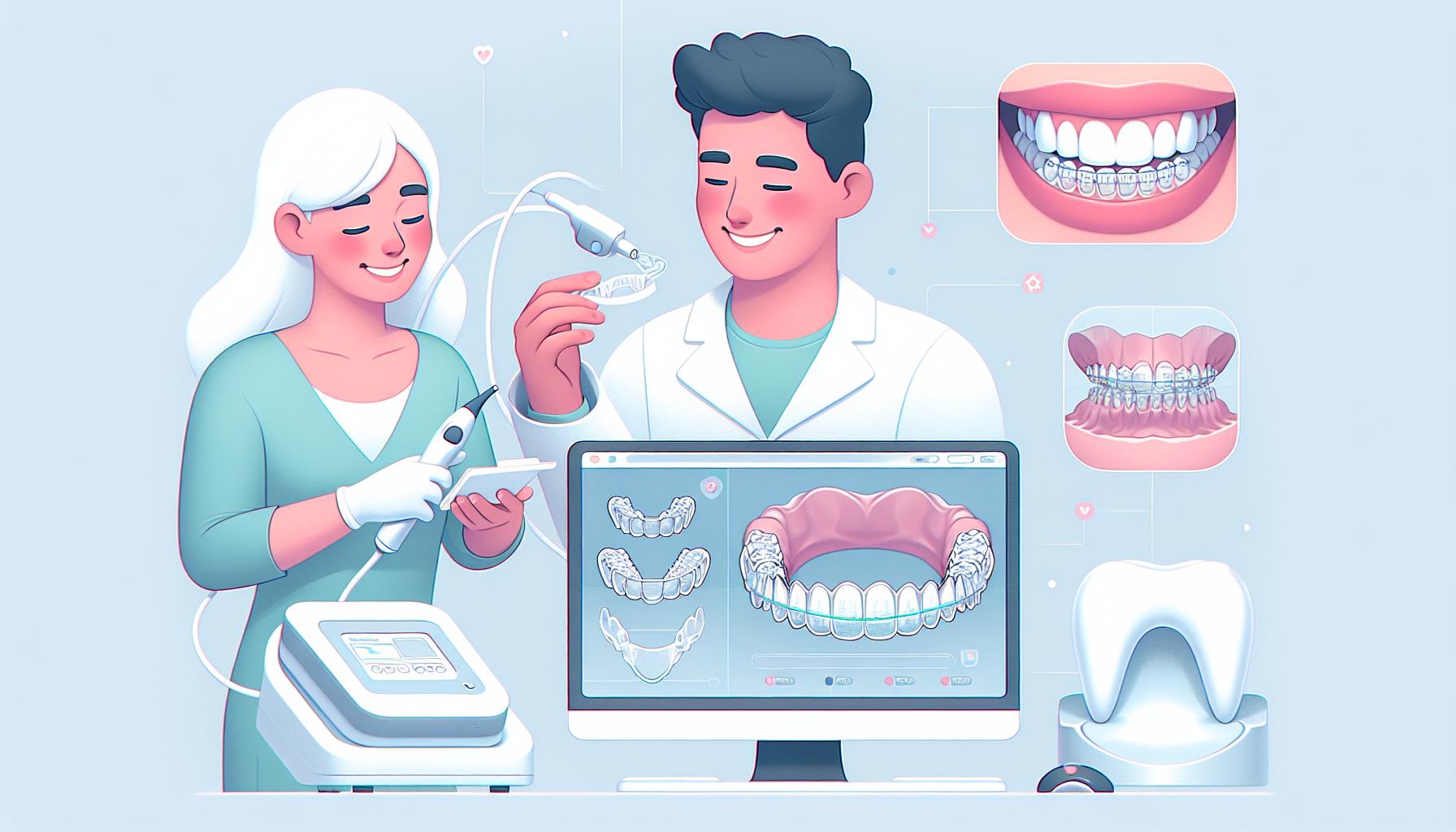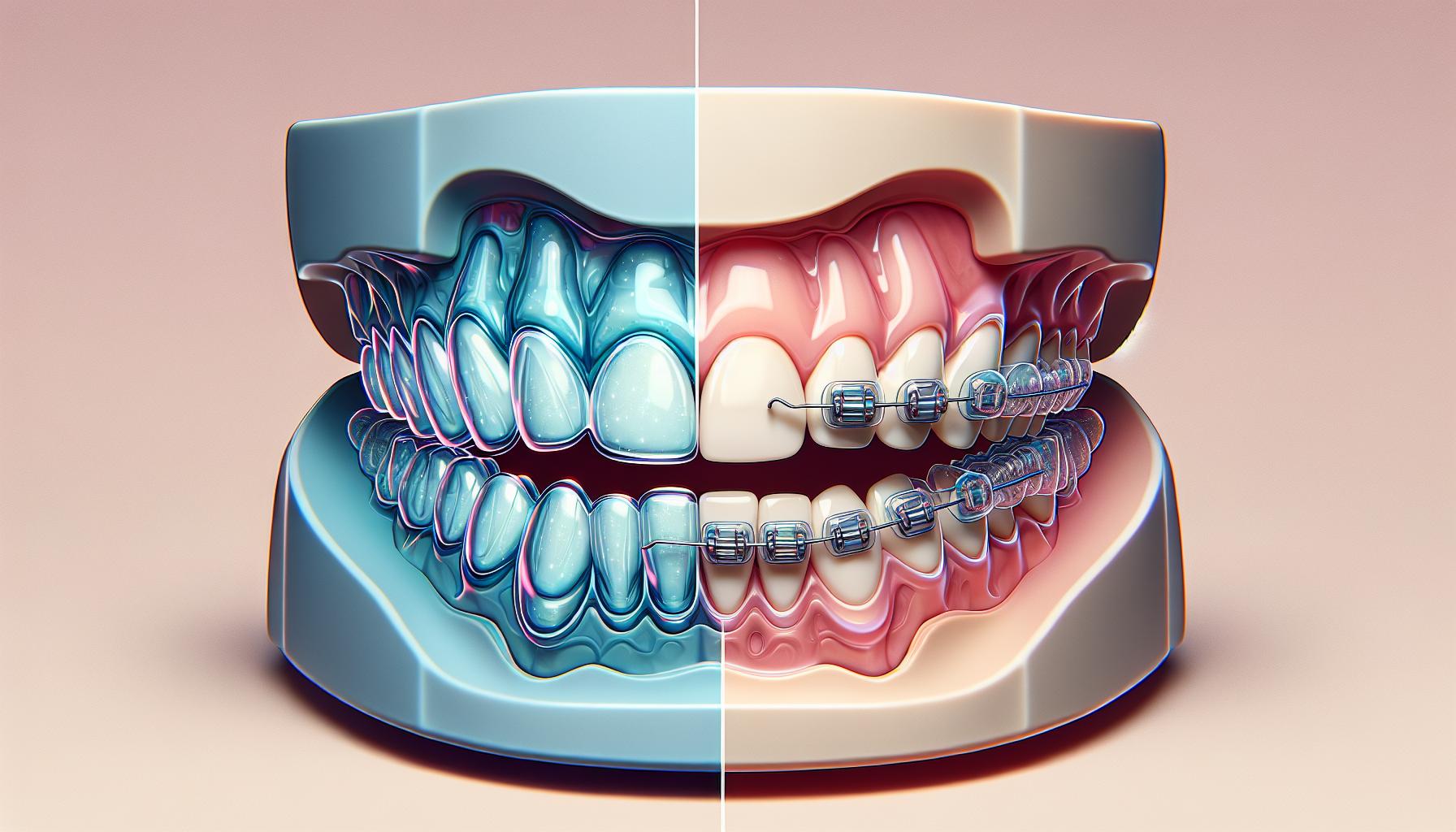Table of Contents
- Understanding the Basics
- What Are Braces?
- What Is Invisalign?
- Comparing the Two Options
- Cost Considerations
- The Verdict: Are Invisalign Better Than Braces?
- Self-Assessment: Should I Get Invisalign or Braces Quiz
- Making the Final Decision
- Conclusion
Understanding the Basics
Choosing an orthodontic treatment is a personal journey that involves careful analysis of treatment effectiveness, aesthetic appeal, lifestyle factors, and cost. With innovations constantly propelling the field forward, one common inquiry remains: should I get Invisalign or braces? This article is designed to provide clear insights that encompass both traditional options like metal braces and modern advancements like Invisalign.
Before diving into the specifics, it’s important to understand that every smile is unique. What might work best for one person may not be ideal for another. Therefore, consulting a trusted orthodontic professional is always recommended. Bearing that in mind, we will provide a comprehensive comparison to answer questions such as which is better, Invisalign or braces, and explore the nuances behind each treatment option.
What Are Braces?
Braces have been the most common orthodontic treatment method for decades. They work by applying continuous pressure on the teeth to move them gradually into the desired position. Here’s a detailed look at how braces function:
How Do Braces Work?
- Components: Traditional metal braces consist of brackets that are bonded to the teeth, archwires that connect the brackets, and ligatures (small rubber bands) that secure the wires in place.
- Mechanism: The archwire applies steady pressure on the brackets, gradually shifting teeth into alignment.
- Adjustments: Regular visits to the orthodontist are necessary for tightening and adjusting the archwires.
Advantages of Braces
- Proven Effectiveness: Braces have a long track record and are highly effective for a wide range of dental issues, including severe misalignments, bite problems, and complex orthodontic corrections.
- Versatility: They can treat various dental issues that might be challenging for other methods to handle.
- Cost-Effective Options: In many cases, traditional braces provide a more budget-friendly option compared to newer technologies.
Disadvantages of Braces
- Aesthetics: Traditional braces are noticeable, which might be a concern for those who prefer a less visible option.
- Maintenance: Special care is needed when eating certain foods, and oral hygiene can be more challenging due to the hardware.
- Discomfort: Braces can cause discomfort, especially after adjustments, and may lead to irritation of the gums and cheeks.
For many, braces remain a reliable treatment option. However, in today's modern world, many patients find themselves asking: which is better, Invisalign or braces?
What Is Invisalign?
Invisalign represents a modern, discreet alternative to traditional braces by using a series of clear, removable aligners. Developed with cutting-edge technology, Invisalign is designed with your lifestyle in mind, offering both comfort and effectiveness.
How Does Invisalign Work?
- Custom-Made Aligners: Invisalign aligners are custom-made to fit your unique dental structure. Using digital scans or impressions, a series of aligners are created to gradually shift your teeth.
- Sequential Treatment: Each set of aligners is worn for about two weeks before moving on to the next, guiding your teeth progressively towards alignment.
- Removable and Discreet: Unlike braces, Invisalign aligners can be removed for eating, brushing, and cleaning, making them highly convenient for daily use.
Advantages of Invisalign
- Aesthetics: The clear design of Invisalign aligners makes them nearly invisible, which is a primary reason many individuals choose this method.
- Ease of Maintenance: Being removable means that you can maintain better oral hygiene. There’s no need to navigate around brackets and wires during brushing.
- Comfort: Without metal brackets or wires, most users report fewer instances of irritation in the mouth.
- Flexibility: Invisalign treatment allows for fewer restrictions on what you can eat, improving your overall treatment experience.
Disadvantages of Invisalign
- Complex Cases: Although Invisalign is highly advanced, it might not be suitable for addressing all dental issues, especially complex orthodontic problems.
- Compliance Required: Success with Invisalign heavily relies on patient compliance. The aligners must be worn for 20 to 22 hours per day, making discipline a key factor.
- Cost Considerations: The costs associated with Invisalign can be higher in certain cases, which brings up another crucial question: are Invisalign or braces cheaper?
Comparing the Two Options
When deciding between Invisalign and braces, many patients wonder, "are Invisalign better than braces?" The answer isn’t straightforward, as it depends on individual circumstances, priorities, and dental conditions. Let’s break down the main areas of comparison.
Effectiveness and Treatment Time
-
Complexity of Treatment:
- Braces are often the preferred choice for more complex dental issues. Their ability to apply continuous, controlled pressure makes them ideal for severe misalignments and bite issues.
- Invisalign works best for moderate corrections. Minor to moderate dental misalignments can often be corrected efficiently, although some complex cases may require additional intervention.
-
Treatment Duration:
- The overall treatment time can vary significantly depending on the severity of the dental issue and patient compliance. While traditional braces may require adjustments every few weeks, Invisalign may offer a more consistent treatment timeline if aligner changes are followed diligently.
-
Effectiveness:
- In many cases, studies have shown that when patients adhere to the prescribed usage, Invisalign can produce results similar to those of braces for certain conditions. However, which option is better, Invisalign or braces, is ultimately determined by how well the method addresses your specific needs.
Aesthetics and Comfort
-
Discretion:
- Invisalign aligners are made from a clear plastic material, making them virtually invisible throughout your treatment. This is a huge plus for adults and teens who want a subtle solution.
- Braces, particularly traditional metal ones, are more noticeable, which may affect self-confidence during treatment.
-
Physical Comfort:
- Invisalign aligners are smooth and custom-fit, reducing the risk of irritation to the gums and inner cheeks.
- Braces, with their brackets and wires, can sometimes cause sore spots and discomfort, particularly after adjustments.
-
Dietary Flexibility:
- With Invisalign, you can remove the aligners while eating, allowing you to enjoy all your favorite foods without worry.
- Braces, on the other hand, require dietary modifications to avoid damage to the brackets and wires.
Lifestyle and Maintenance
-
Daily Routine:
- Invisalign aligners are removable, making daily activities like eating, brushing, and even occasional drinking much easier. This can be a major advantage for those with busy lifestyles.
- Braces are fixed, requiring more conscious care in daily routines. Special cleaning tools and techniques are often necessary to maintain oral hygiene with braces.
-
Monitoring Progress:
- Invisalign sometimes comes with the ability to monitor progress digitally, which can be very motivating and informative for patients.
- Braces require more frequent office visits for adjustments, which may or may not fit conveniently into your schedule.
-
Impact on Activities:
- Sports and other physical activities are easier to manage with Invisalign since you can remove the aligners if necessary (though you should wear a guard when needed).
- Braces can sometimes limit certain activities due to the possibility of injury or damage to the hardware, particularly in contact sports.
Cost Considerations
A significant factor in the decision-making process is cost. Many patients ask: are Invisalign or braces cheaper? The answer varies depending on several factors, including the complexity of the case, the geographic location, and the specific orthodontic provider.
Factors Influencing Costs
-
Severity of the Dental Issue:
More complex cases may require longer treatment times and could potentially drive up costs, regardless of the method chosen.
-
Treatment Duration:
The duration and frequency of visits can affect the overall price. Traditional braces might require more frequent adjustments, potentially increasing the cost.
-
Material Costs and Technology:
Invisalign generally utilizes advanced technology and custom manufacturing, which can sometimes result in higher costs compared to conventional braces.
-
Insurance and Financing:
It’s always essential to explore insurance options and financing plans. Some dental insurance plans cover part of the cost for either treatment, and many providers offer payment plans to make treatment more affordable.
Comparing the Costs
When evaluating "are invisalign or braces cheaper," it is crucial to remember that cost is not the only consideration. While traditional braces might seem less expensive on a per‐month basis, the overall expense may balance out once you factor in the number of visits, maintenance products, and potential adjustments needed. Invisalign might carry a higher sticker price, but its convenience, reduced maintenance needs, and the ability to remove aligners for oral hygiene can provide value that many patients find worthwhile.
Ultimately, the decision should be based on a comprehensive evaluation of your dental needs, lifestyle demands, and financial situation. Consulting with your orthodontic provider will help you get a personalized cost breakdown that reflects your specific treatment plan.
The Verdict: Are Invisalign Better Than Braces?
The debate over which is better, Invisalign or braces, hinges on several factors. It’s important to note that neither option is universally superior; instead, the best choice depends on your individual situation:
- For Mild to Moderate Dental Corrections: Invisalign is an excellent choice. Its discrete appearance and lifestyle flexibility make it highly appealing to many individuals, especially adults and teens who value aesthetics.
- For Complex Orthodontic Issues: Traditional braces have long been the gold standard. Their ability to handle severe misalignments, bite issues, and other complex dental corrections typically surpasses that of Invisalign.
- For Social and Practical Considerations: If you lead an active lifestyle and are seeking comfort and convenience, Invisalign’s removable design provides significant advantages.
- For Budget-Minded Patients: If cost is a major factor, exploring both options with your provider is essential. In some cases, traditional braces may be the more budget-friendly option compared to the initial expense of Invisalign.
When pondering the question, "should I get Invisalign or braces?" it may help to consider both your personal priorities and your orthodontist’s recommendations. This comprehensive perspective will guide you in making the most informed decision for your dental health.
Self-Assessment: Should I Get Invisalign or Braces Quiz
One practical method to help you decide is to take a self-assessment quiz. Here’s a simple “should I get Invisalign or braces quiz” to guide your decision-making process:
Question 1: How important is discretion in your treatment?
- A) Extremely important – I want my treatment to be as invisible as possible.
- B) Not a major concern – I prioritize effectiveness over aesthetics.
Question 2: What’s your tolerance for dietary restrictions during treatment?
- A) I prefer to eat normally without limitations.
- B) I’m willing to adjust my diet if it ensures the best results.
Question 3: How severe are your dental alignment issues?
- A) My issues are moderate and can be corrected gradually.
- B) I have significant misalignments or bite issues that require intensive treatment.
Question 4: How does your daily lifestyle affect your treatment choices?
- A) I have a busy lifestyle and need a treatment that won’t interrupt my routine.
- B) I can adjust my schedule for frequent orthodontic visits if necessary.
Question 5: What is your budget for orthodontic treatment?
- A) I’m willing to invest more for convenience and aesthetics.
- B) I need an effective treatment that is also cost-efficient.
Interpreting Your Quiz Results:
- Mostly A’s: You might lean towards Invisalign. Its discreet nature, flexibility with eating, and ease of maintenance make it a strong candidate, especially if you have moderate dental issues.
- Mostly B’s: Traditional braces could be your best fit. Their proven effectiveness for complex cases, affordability in many instances, and robust performance might align better with your needs.
This quiz serves as a starting point. However, a personalized evaluation by your orthodontist is vital for making the final call on your treatment plan.
Making the Final Decision
Deciding between Invisalign and braces involves a careful assessment of multiple factors:
-
Consultation with an Orthodontist:
A professional evaluation is crucial. Your orthodontist can diagnose the complexity of your dental issues and recommend the best course of treatment based on your specific needs.
-
Lifestyle Considerations:
Consider how each option will affect your daily life. If you’re frequently in social or professional settings, the discreet nature of Invisalign might be very appealing. On the other hand, if you need a tried-and-true method for severe dental issues, braces might offer superior effectiveness.
-
Budget and Financing:
Evaluate the overall costs involved with each method. Ask your orthodontist about financing options and insurance coverage to determine what fits best within your budget. When you compare treatments, ask: are Invisalign or braces cheaper? This will largely depend on your individual treatment plan.
-
Personal Preferences:
Reflect on what factors are most important to you—whether it's appearance, comfort, treatment duration, or cost. Use the insights from our “should I get Invisalign or braces quiz” as a guideline in your decision-making process.
-
Long-Term Goals:
Consider how quickly you want to see results and what level of commitment you’re prepared to invest in your treatment. Invisalign requires a high degree of compliance since the aligners need to be worn almost all day, while braces provide a fixed option that works continuously without patient intervention.
Conclusion
In the debate between Invisalign and braces, there is no one-size-fits-all answer. The question of whether you should get Invisalign or braces ultimately depends on your individual dental needs, lifestyle, budget, and personal preferences. For those with moderate alignment issues who prioritize aesthetics and convenience, Invisalign might seem like an appealing solution. Conversely, for patients facing complex orthodontic challenges or those who are cost-conscious, traditional braces may be the recommended course of action.
In making an informed decision, consider the following key points:
- Understand the fundamental differences between the two systems.
- Assess your personal needs through metrics such as effectiveness, aesthetics, comfort, and cost.
- Utilize resources like our “should I get Invisalign or braces quiz” to evaluate which treatment aligns best with your daily life and long-term goals.
- Engage in honest discussions with your orthodontist, who can provide tailored advice based on your specific case.
By examining questions such as "are Invisalign better than braces" and "are Invisalign or braces cheaper," you gain a clearer picture of what to expect from each treatment. Armed with this comprehensive information, you can confidently choose the option that is best suited to transform your smile and enhance your quality of life.
Remember, both Invisalign and braces have their own distinct advantages, and your journey towards a healthier, more attractive smile is uniquely yours. Take the time to weigh your options, ask the right questions, and seek professional guidance. No matter which route you choose, the ultimate goal is achieving a confident, radiant smile that truly reflects your inner self.
When it comes down to the final decision, the most important question remains: should I get Invisalign or braces? Your answer will shape your treatment journey, and by considering all the factors discussed in this article, you’re well on your way to making the best choice for your dental health and lifestyle.
Embrace the journey to a better smile with the confidence and knowledge to choose the treatment that fits you perfectly—and soon enough, you’ll be enjoying the benefits of a beautifully aligned, healthy smile every single day.


